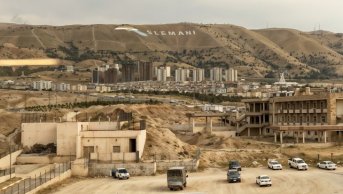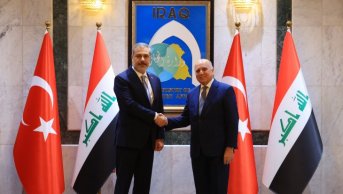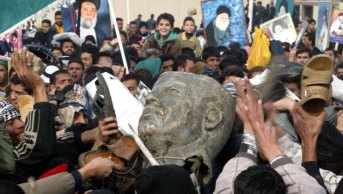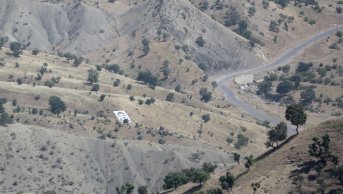Conditions of Turkmen Immigrants of Talafar in Najaf and Karbala in The Light of Field Observations

Following ISIS' control over regions of Mosul, Anbar, Titkrit and Diyala a significant movement of migration has begun. In addition to internally displaced people in Iraq, many fled to countries such as Turkey, Jordan and Lebanon. Nevertheless, the displacement of people seems to remain as an internal issue after ISIS' rise in the region. The Ministry of Displacement and Migration in Iraq has declared that over 4 million people has displaced in Iraq due to the migration emerged after the expansion of ISIS.
Analyzing migration from regions of Anbar, Mosul and Tikrit under complete ISIS control, Mosul came in second after Anbar in the terms of the number of people who fled from the city. The largest immigration was experienced in the Mosul province center within Mosul. The migrations in Sinjar and Tallaar are striking among the districts of Mosul. Indeed, Talafar is one of the cities which ISIS vandalized the most.
A large part of the people of Talafar forced to migrate by ISIS' entrance to Talafar. While some of the migrants fleeing from Talafar settled in provinces such as Erbil, Kirkuk in the north of Iraq, some had to migrate to the south of Iraq and settled especially in the provinces like Najaf, Karbala and Babil. Moreover, it is known that some of the Talafar migrants took refuge outside of the Iraq and around 55 thousand Turkmen migrated to Turkey. In this article, the situation of Turkmens of Talafar who migrated to the south of Iraq will be discussed in the light of the data obtained from the field study conducted in Najaf and Karbala. It can be observed that Talafar Turkmen migrants are spread almost every province of Iraq at present. It is known that the Talafar Turkmens migrating to the south of Iraq have amassed in Najaf and Karbala, and most of them are settled in Hussainiyas between Najaf and Karbala. About 15 thousand Turkmen families from Talafar migrated to the provinces in the south of Iraq. Most of these families are Shia Turkmens from Talafar. It is known that Turkmens of Talafar’s immigration to Karbala and Najaf occurred immediately after the attacks of ISIS in June 2014. After that no major immigration was experienced but occasional change of location of some families is known. In this sense, it is possible to state that population of Talafar Turkmens migrating to the south of Iraq remained stable.
Turkmens continue to keep in touch with each other. It would not be wrong to say that this communication has helped to preserve Turkmen's unity and national identity. A sense of a serious weariness is present among Turkmens due to the immigration. Even though they did not experience any difficulty while participating in work and social life, Turkmens emphasized that they do not fit in with the people of southern Iraq. Since living standard and life quality in the regions that Turkmens migrated to, are lower than their pre-immigration standard, Turkmens are more and more determined to go back to their homes. Turkmens want to return their homes as soon as Talafar was liberated from ISIS. It is possible to say that there is an absolute determination on returning back to Talafar even if Turkmens settle in the places they migrated to. The migrant Turkmens in the south of Iraq believe that no one wants to help them and as a result they are isolated from the society.
Turkmens who believe being different from the people of southern Iraq in terms of tradition, culture, moral and human values, thinks that even Shia identity does not serve as a unifying factor. In fact, Turkmens argue that since people of southern Iraq have strong Arab Nationalist feelings, they exclude Turkmen communities from the society. This situation positively contributed to strengthen and preserve Turkmens national identity. Hence, Turkmen national identity has been strongly emphasized in the interviews with Turkmen immigrants in Najaf and Karbala.
It would not be wrong to say that the rise of the Turkmen national identity contributed to the increase in expectations from Turkey. These expectations compromise improving the existing conditions of the migrants and contributing to the reconstruction in the liberated Talafar. Turkmens of Talafar believe that the reconstruction of Talafar can only be achieved with contributions of Turkey can provide.
It is known that Turkey's position on Talafar and on Turkmens is very influential.
Turkmens indicate that they will not accept entrance of any force from other regions into Talafar. It is commonly believed that the sectarian conflict in Talafar is fueled by external forces. Therefore it is argued that peace and reconciliation in Talafar can only be achieved through the people of Talafar. Any involvement of an outside force in Talafar affairs will only complicate the situation. Many believe that a joint force created in Talafar will have crucial contribution in protection of Talafar. It is also thought that a common political structure after the return of Talafar people to Talafar will support peace, stability and unification in Talafar.
It is said that in the event of a reconciliation of the Talafar Turkmens, no power from outside will be able to defeat the unity of Talafar and it is claimed that external intervention caused Talafar to fall into such a complicated situation. For this reason, Turkmens stated that they do not want any outside parties such as PKK - a terrorist organization operating in the vicinity of Talafar due to its presence in Sinjar- or the Iraqi Kurdistan Regional Government (KRG) that wants Talafar under its influence, to control or claim rights on Talafar and indicated that they will fight to protect the territories of the Shia and Sunni people of Talafar. Turkmens also have a consensus on seeing the PKK as a threat to them. Turkmens indicate that it is not possible to approve PKK since it is a formation against Turkey by underlying the fact that PKK is a terrorist organization. In this context, Shia Turkmens of Talafar take a serious stand not only against PKK but also against Kurdistan Regional for their ambitions in Talafar. Especially, it is observed that Turkmens who were forced to migrate by the ISIS capture of Talafar will not forget the difficulties they have been put through in the checkpoints and difficulties when they were not allowed to cross to territories of KRG. In fact, KRG is seen as one of the reasons for ISIS' existence and the situation in Talafar. In particular, there is a belief that the KRG under the leadership of Masoud Barzani did not show any resistance after the attack of ISIS on Sinjar and left Sinjar in ISIS' hands, as a result ISIS started to control Talafar.
In conclusion, even if Turkmens of Talafar have migrated hundreds of kilometers far from their own land and live in difficult conditions, they hold on to their Turkmen identity. It is not wrong to say that almost all of the Talafar Turkmen will return to their homes in case that Talafar is liberated from ISIS. In additional to their Turkmen national identity, Turkmens also identify themselves as people of Talafar. Although political conflicts and weak Iraqi government has driven Turkmens to despair, Turkmens starting to get their hopes up as the relations between Turkey and Iraq develop. Therefore it can be said that strengthening of Turkey’s position in the Middle East and Iraq will also help to cement Turkmens' position in Iraq.










